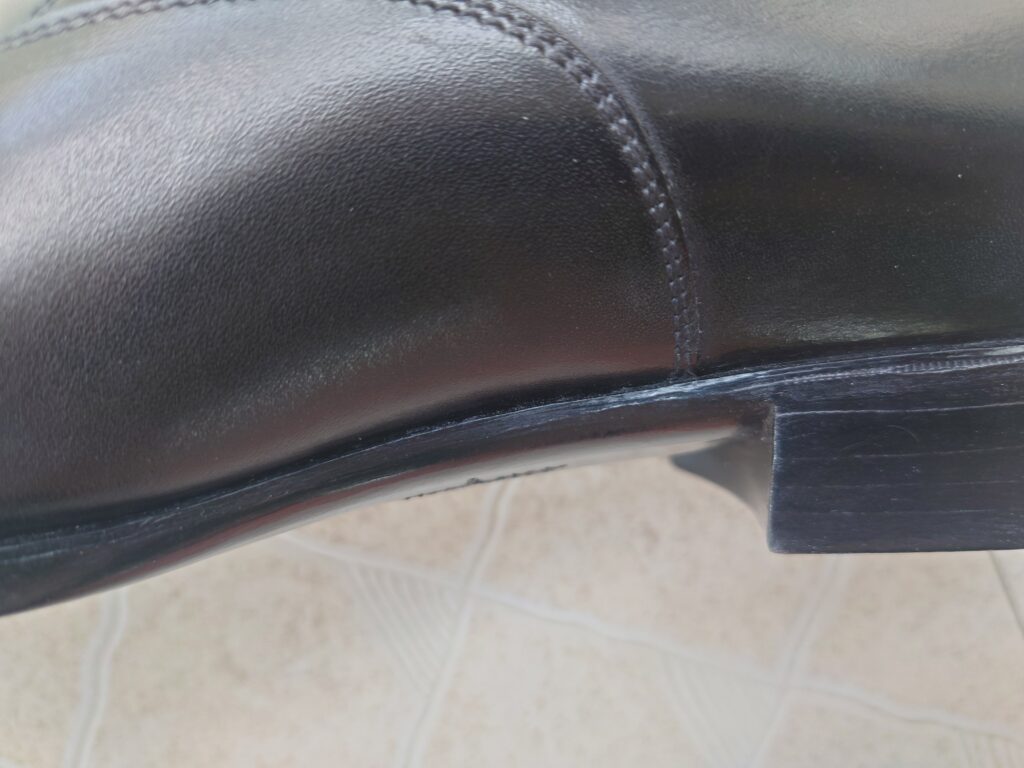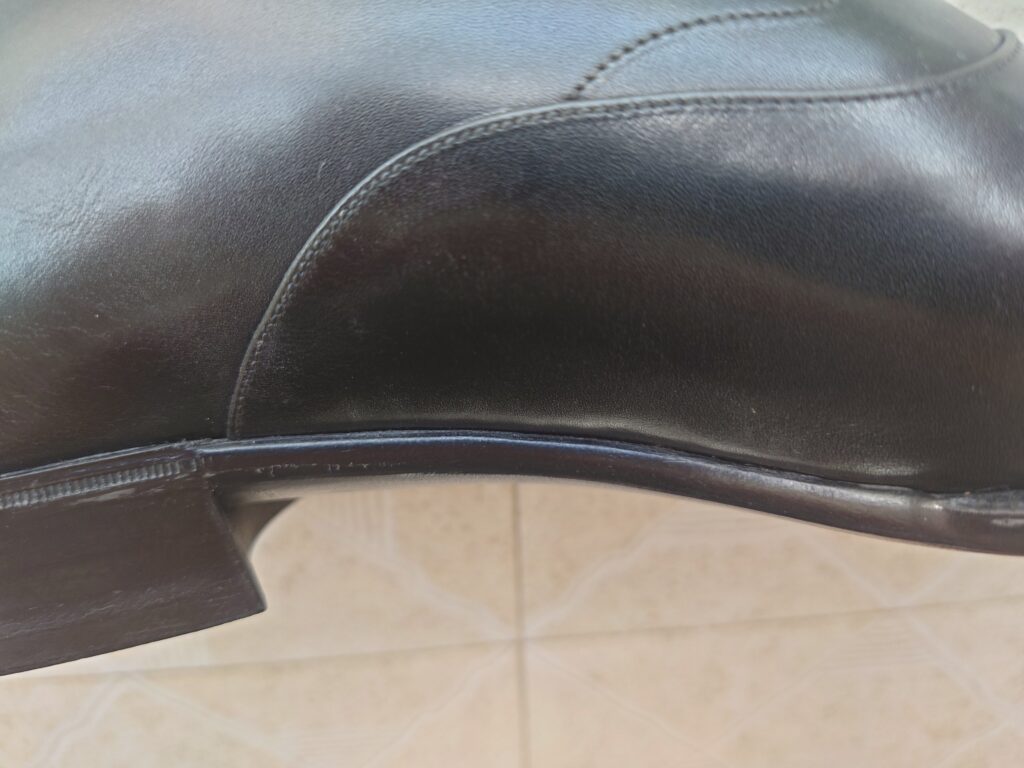Many people pay attention to me because I have introduced a lot of technical knowledge about dress shoes.
Later, I thought aesthetics is very important, because after all, dressing handsome is more important than purely handsome shoes on the shelf.
Life is inherently fluid, and I can convey my own ideas, which is the pillar that I can continuously output.
I talked about full blind stitching construction on Maftei shoes many times.

Let’s start with the origin of the name.
The word “blind”, in welted shoes, is more connected with the phrase “blind waist”.

So what is blind? Stitches on the welt.

The origin of blind waist is the overall shoe shape with more streamline and sculptural feeling, which is chosen by bespoke shoes in order to show exquisite feeling.
Part of this sculptural feeling comes from the sharp transition of the vamp from the instep to the forefoot, on the other hand, it comes from the arch of the foot. Closer to the arch of the foot not only gives the foot a more comfortable and snug feeling, but also makes the shoe/foot more refined.
How is blind waist achieved? Where are the stitches?
The stitches are still there, but it is covered, so it can’t be seen. What covers the stitches? The answer is the leather of the outsole.

Here, there are two ways, one is Central Europe, represented by Maftei, that is, the leather at the waist of the shoe is “rolled up” and pushed from parallel to the outside into an upward package.

The other one was chosen by many Japanese shoemakers. You can see the production video shared by Sereno Yosui on Youtube. The outsole leather of the ousole at the waist, leaving a part outside, then shoveling the extra area thin, and then coming back in reverse to cover the stitches.
Either way, the stitching must be very, very close to the upper, so as to achieve the final refinement. If the seam is off and the edge is wide, it will be bloated whether it is pushed up or wrapped in thin sole leather.
In order to achieve blind waist, there are also many crooked ways. For example, Antonio Meccariello’s glued waist, or Saint Crispin’s wooden pegged waist, as well as Carlos Santos Handcrafted line’s idea that Goodyear construction at the forefoot and Blake construction at waist. These are commonly known as false blind waist.
Hey, isn’t this article about full blind stitching construction? Why have you been talking about blind waist?

Because full blind stitching construction is to apply the technology of blind waist to a whole circle of the outsole.
What is the significance of full blind stitching?
Frankly speaking, there is only one, that is, to show off shoemaking skills, to show that the shoes are truly handmade.
We know that machine Goodyear shoe brands advertise they are making handmade shoes, which is a false propaganda. But blind waist must be achieved by hand. In the same way, full blind stitching construction, as long as you see it, you either don’t know anything about welted shoes, say that this is a cemented shoe, or you know that this is a real handmade shoe with astonishing skills.
Some people will say, don’t blind-stitched and glued shoes look the same? Exactly. Therefore, this kind of shoes can only tease high-end enthusiasts. For people who know something about welted shoes, when they see upper, last and leather are so refined, why can’t the stitches be found? He will feel that his cognition has been challenged, and then he will find that it is really awesome!

